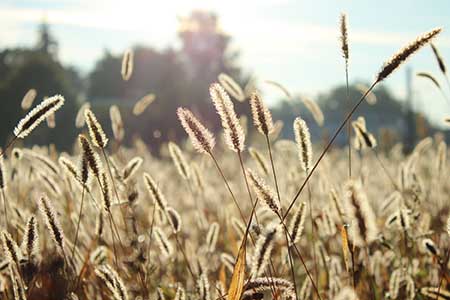 Wisdom 12:13, 16-19
Wisdom 12:13, 16-19
 Romans 8:26-27
Romans 8:26-27
 Matthew 13:24-30
Matthew 13:24-30
This Sunday's readings present some dynamic and contradictory images of destruction versus growth, punishment versus justice, death versus life, hopelessness versus hope. How could a God who gathers the “weeds [to be] burned up with fire” and casts “evildoers” into “the furnace of fire”, where there is “weeping and gnashing of teeth”, also be capable of showing benevolence to sinners and gives hope to the hopeless (Mt 13:40, 42)? Jesus uses parables to shed light on this conundrum. Interestingly, parables, like allegories, are figures of speech that use everyday images or objects to reveal deeper truths. No wonder readers are often confused by parables. Jesus explains that “without a parable he told nothing” in fulfillment of the Prophet: “‘Keep listening, but do not comprehend; keep looking, but do not understand. Make the mind of this people dull, and stop their ears, and shut their eyes, so that they may not look with their eyes, and listen with their ears, and comprehend with their minds, and turn and be healed'” (Mk 4:34, Is 6:8-10). In other words, Jesus challenges us to see and listen with our hearts rather than our faculties so that we may wholeheartedly turn to our all-loving God and be made whole again.
Social media and news outlets are often inundated with devastating images of suffering and gross injustice which bring a new meaning to “fire and brimstone”! We witness thousands of Syrian refugees, men, women, and children, crossing open waters and national borders; emasculated and stripped of human dignity. Many more never survive the punishing journey itself. What about the recent alleged terrorist attacks in Manchester and London, England where many innocent people lost their lives? How much more could one endure? Where are the signs of hope?
In this week's Gospel passage, Jesus tells the parable of a field where both good and bad seeds are given equitable opportunity to grow and mature. Instead of destroying the weeds right away and risking the good seeds, the master decides to “let both of them grow together until harvest” (Mt 13:30). Indeed, this reveals a God of justice, gentleness, and patience as portrayed in the Book of Wisdom: “Although you are sovereign in strength, you judge with mildness, and with great forbearance you govern us” (Wis 12:18). In other words, by tolerating sins, God is giving the sinners an opportunity to repent before their eventual destruction.
In a world where good and bad seeds grow together, the call of our loving Father: “Whom shall I send?” (Is 6:8). Upon receiving the spirit of hope and courage at our Baptism and Confirmation, we are called to “fight the good fight in faith” (1 Tim 6:12). Do we have the courage to say, “Here am I; send me!” (Is 6:8)?
“The light shines in darkness and the darkness did not overcome it” (Jn 1:5). Indeed, in a world filled with destruction and death, hope abounds. Ojibway-Canadian writer, Richard Wagamese, tells an allegory of how justice and hope go hand-in-hand.
Creator asked the tamarack why it refused to help the chickadee. The young tree replied that it did not see the need to surrender its beauty to shelter a tiny bird who would likely die anyway. When asked by Creator, the pine tree replied that it had felt the bite of the many frigid winds and know how lonely and terrifying that could be.
As a sign of the pine tree's compassion, Creator granted the pine to keep its drooped lower branches from then on. For the tamarack; however, it must lose its needles every fall because of its selfishness.
In this story, Creator shows justice and hope simultaneously. Creator rewards the compassion of the old pine tree while justly punished the vain and hopeless tamarack who thinks the small bird will die anyway. However, Creator in the story gives hope to even the worst sinner by showing tamarack that though the needles may fall, they will always return. Destruction and growth; death and life commingled. Indeed, God judges us with kindness, “righteous must be kind and you have filled your children with good hope” (Wis 12:18b-19). This demonstrates that justice and hope work together as a healing balm for the wounded souls.
Finally, the benevolent image of the mustard tree, that springs from the tiniest of seeds but grows into a large and welcoming home for all, is indeed a great symbol of hope, compassion, and love. Like the old pine tree in Wagamese's story, the mustard seed does not only live for itself but for many others whose lives depend on it. We, too, are called to be mustard trees; a beacon of light and visible sign of hope for the hopeless in this world where the good and the bad inevitably grow together.
